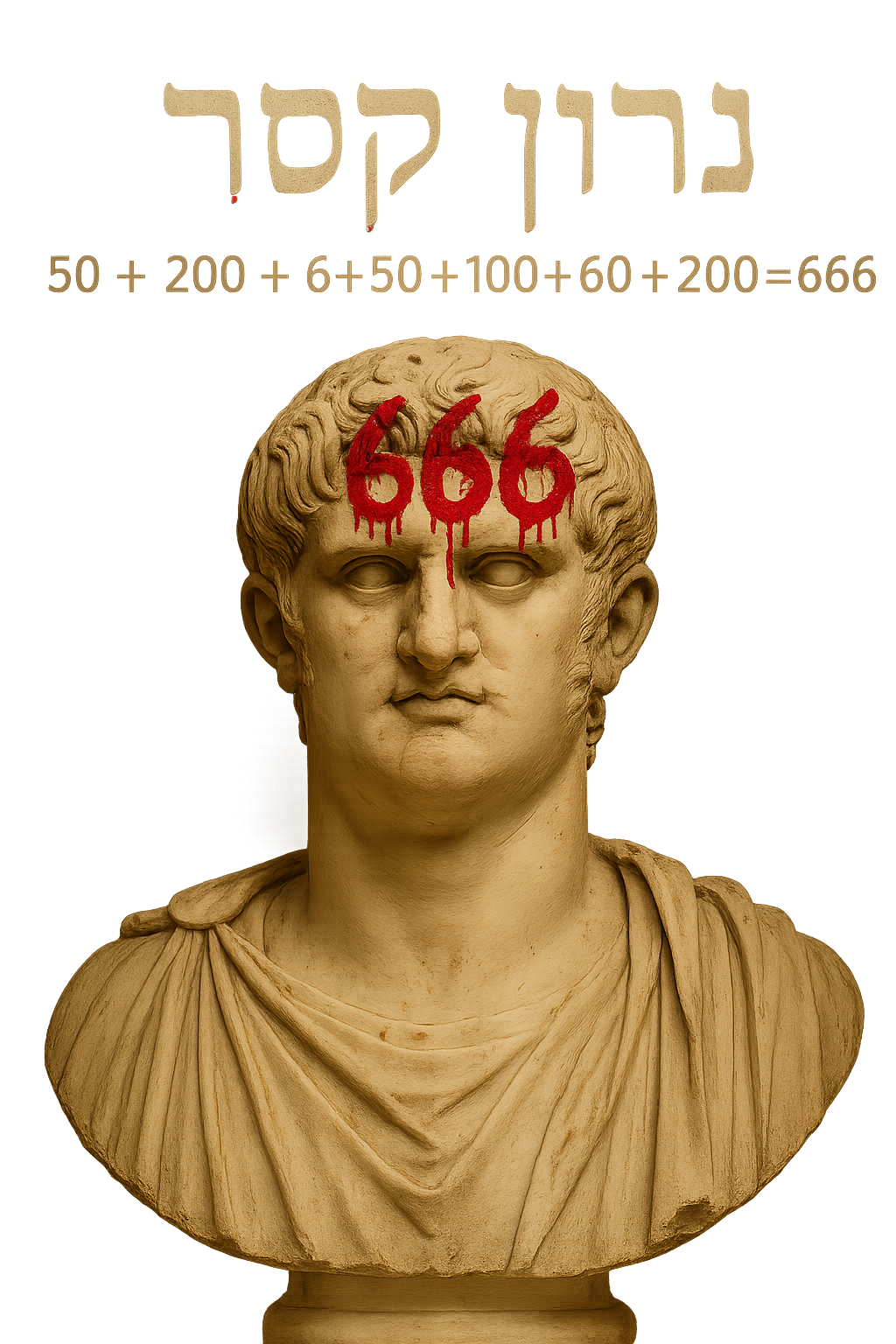Beast, Empire, and Antichrist: A Preterist Reading of Revelation
Introduction
The Book of Revelation has stirred centuries of speculation, fear, and fascination. Many modern Christians, influenced by dispensational futurism, expect a future global dictator—the Antichrist—to rise, form a one-world government, and demand allegiance through a mark: 666. But a preterist approach offers a different lens, grounded in Scripture and history. It proposes that these events were not future predictions, but descriptions of Rome and Nero Caesar in the first century. In this article, we will explore the identity of the Beast, the meaning of 666, the so-called “resurrection” of the wounded empire, and the man of lawlessness, offering a compelling and historically grounded alternative to futurist interpretations.
The Futurist View: A Coming Global Tyrant
Dispensational evangelicals commonly teach that Revelation prophesies a future Antichrist—a charismatic world leader who will dominate a one-world government, desecrate a rebuilt Jewish temple, and impose a mark (666) required for buying and selling. This mark, they claim, could be a microchip, biometric ID, or digital currency identifier. Such teachings, popularized by Hal Lindsey, Tim LaHaye, and John MacArthur, have led to widespread speculation, with every technological advance—from barcodes to COVID vaccines—scrutinized as a possible precursor to this mark.
Yet this approach often divorces Revelation from its original audience and context. Revelation 1:1 declares these events “must soon take place,” and Revelation 13 describes a beast already operating in John’s day. A preterist reading honors that nearness and anchors the text in the world of the first-century Roman Empire.
Who Was the Beast?
Preterists identify the Beast of Revelation as representing the Roman Empire, specifically under the reign of Emperor Nero. Revelation 13:18 says, “Let the one who has understanding calculate the number of the beast, for it is the number of a man, and his number is 666.” This was not a cryptic puzzle for modern readers—but a code first-century believers could understand.
Hebrew Gematria and Nero Caesar
Gematria is an ancient Jewish practice where letters are assigned numerical values. When the Greek name “Neron Kaisar” (Nero Caesar) is transliterated into Hebrew (נרון קסר), its letters add up to 666:
- נ (Nun) = 50
- ר (Resh) = 200
- ו (Vav) = 6
- ן (Final Nun) = 50
- ק (Qof) = 100
- ס (Samekh) = 60
- ר (Resh) = 200
Total: 50 + 200 + 6 + 50 + 100 + 60 + 200 = 666. This strongly supports the identification of Nero as the beast. In fact, some ancient manuscripts even record the number as 616—a variation that matches the Latin spelling of Nero Caesar.

The Beast’s “Mortal Wound” and Rome’s Revival
Revelation 13:3 describes the beast as having a mortal wound that was healed, which astonished the world. Preterists view this as symbolic of the Roman Empire’s crisis after Nero’s suicide in AD 68, which ended the Julio-Claudian dynasty. What followed was the “Year of the Four Emperors”—a time of civil war and upheaval. Yet the empire survived and was restored under Vespasian, giving the appearance of resurrection. The world marveled at Rome’s continued dominance despite its apparent death. This historical upheaval fits Revelation’s imagery far more naturally than vague future speculation.
The Man of Lawlessness
In 2 Thessalonians 2, Paul describes the “man of lawlessness” who exalts himself against God and sits in God’s temple. Dispensationalists interpret this as a future Antichrist, but preterists see a more immediate fulfillment.
Paul wrote to Christians in the first century, telling them the man of lawlessness was already restrained (2 Thess. 2:6–7). Many preterists believe this figure was either Nero himself or one of his agents, who defiled the early church, demanded worship, and persecuted believers. Nero had Christians crucified, burned, and thrown to wild beasts. His claims to divinity, cruelty, and opposition to God align with Paul’s warnings. The “temple” could symbolically refer to the church—God’s people—rather than a literal building.
Why the Preterist View Is More Coherent
Dispensationalism relies on a two-thousand-year gap between Revelation’s original readers and its supposed fulfillment. It requires a rebuilt temple, a revived Roman empire, and a global totalitarian system centered in Jerusalem. Preterism, however, sees Revelation as a prophetic warning to first-century Christians facing Roman persecution, with symbols rooted in their world—not ours.
Rather than promoting fear and endless speculation, the preterist view encourages historical literacy, biblical consistency, and confidence in Christ’s already victorious reign. It affirms that God judged apostate Israel and pagan Rome, vindicated the church, and inaugurated the kingdom age. The beast is not a future dictator—it was a brutal empire already judged and defeated.
Conclusion: Past Fulfillment, Present Hope
The Beast, the number 666, the mortal wound, and the man of lawlessness all point to events that rocked the first-century world. By grounding Revelation in its original context, the preterist perspective frees believers from fear-based theology and opens the door to hope-filled, kingdom-driven living. Christ reigns now—not someday, but today.
ChristReignsNow.com exists to proclaim that victory, equip the saints, and call the church to build for the long term—not escape, but advance.

Leave a Reply